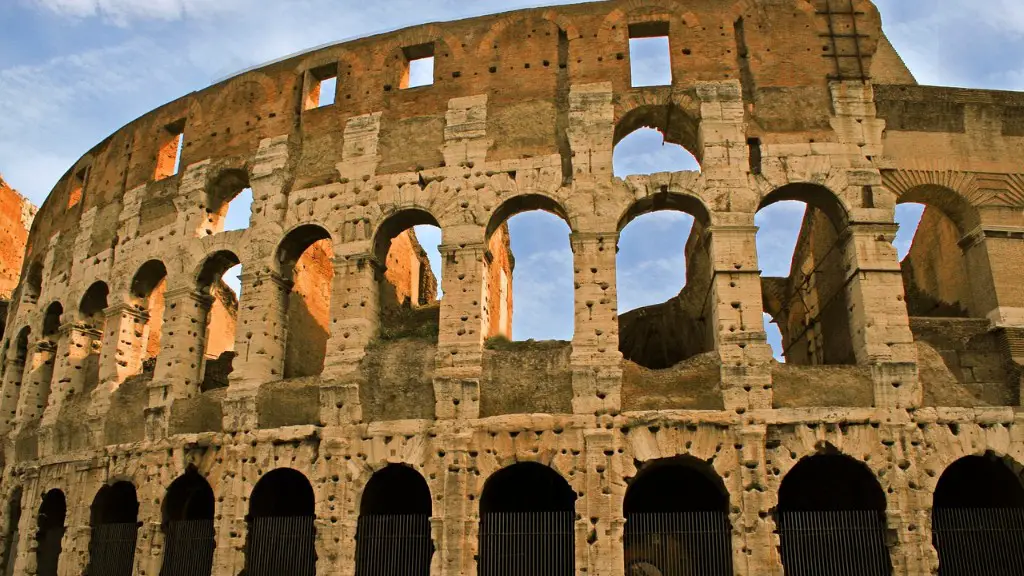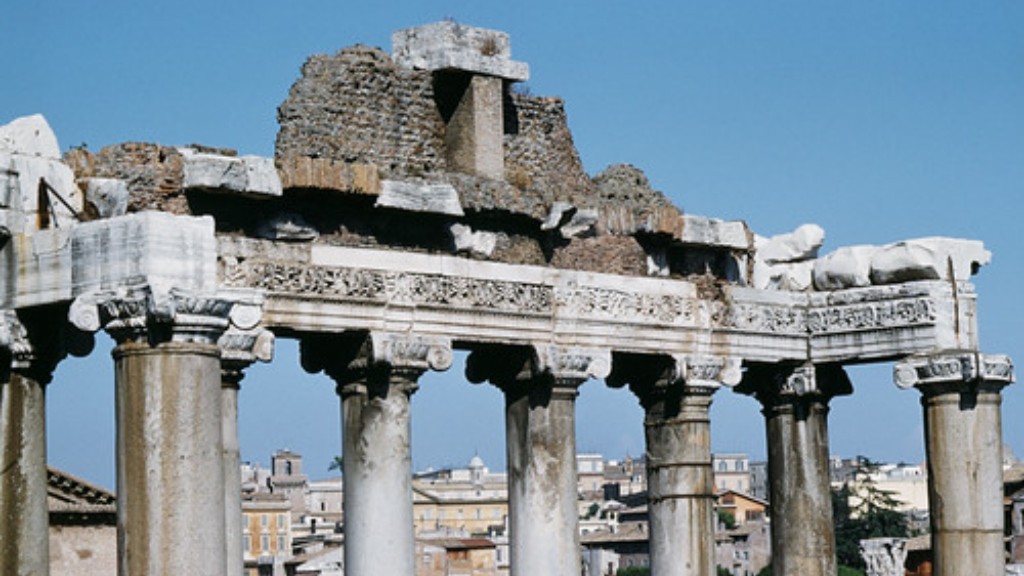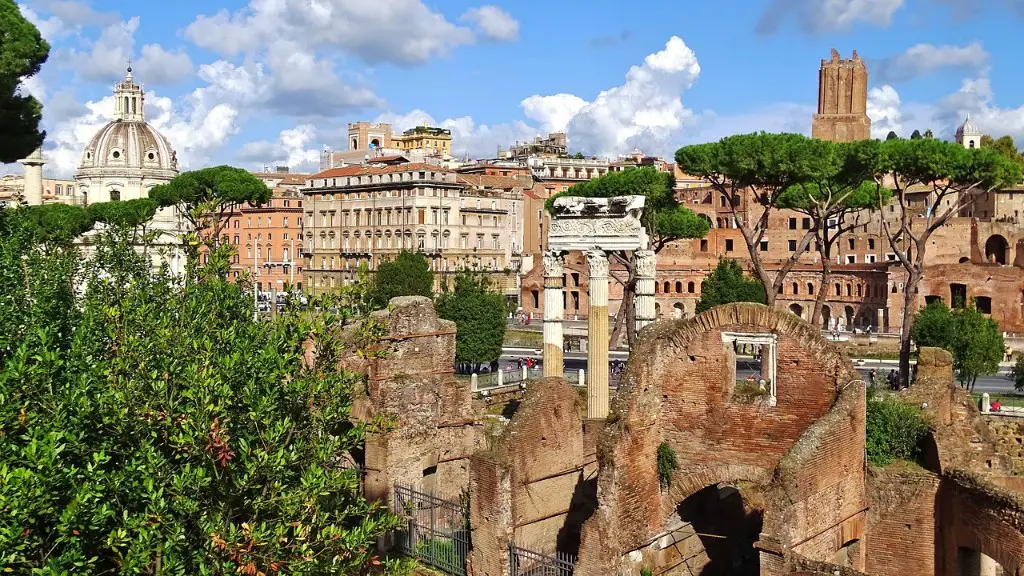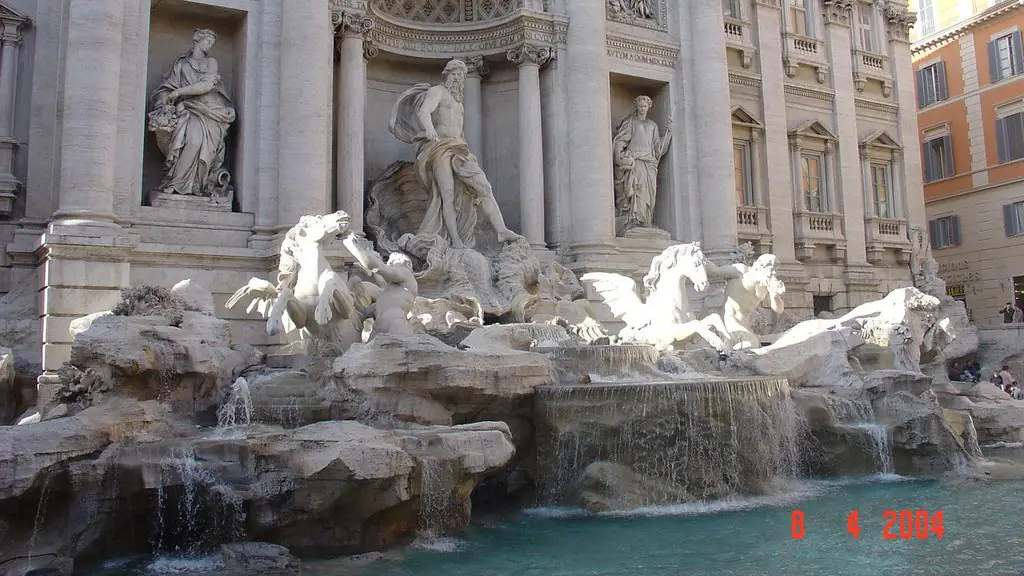Ancient Roman Shopping
For the Romans, commerce was an essential part of their society, and effective shopping spaces were essential for the success of Rome. In most other civilizations, shopping was usually done at informal, ad-hoc sites, but in Rome, the concept of a retail store was born.
In the early days of Rome, retail shopping was conducted in marketplaces where merchants gathered and sold their wares. These marketplaces typically consisted of vendors who sold their items in small stalls and by the roadside, but with increasing population and rising demand for luxury items, permanent shops and stores began to appear.
These stores were known as tabernae in ancient Rome, and they were typically small shops or stalls in the street, near public squares. They typically had small counters inside and sold a range of everyday items such as food, clothing, tools, pottery, and jewelry. Later, larger stores opened up that were able to supply a wider range of goods such as luxury items, fine clothing, and expensive furniture.
The tabernae were staffed by either the shopkeeper or his family, or by slaves. The slave labor enabled the merchants to keep their costs down and pass the savings on to the customers, although in most cases the shop owners were still highly profitable and often had higher standard of living than their customers.
Tabernae were particularly common in the larger cities of Rome such as Rome, Pompeii, and Corinth, although smaller towns and villages also had them. The shops were often situated close to residential areas, where the tabernae could easily be accessed by the local population.
The tabernae were usually very small, typically having only a few small rooms, and could not accommodate large numbers of customers. In some cases, they also served as safe deposit boxes and as places to store valuables. As such, the tabernae were usually under the control of a local council or the town government.
The tabernae were typically owned by private individuals, although some were owned by the state. The owners of the shops had to comply with a range of regulations and were subject to local taxes and tariffs. Shopkeepers could even be fined for selling goods of a poor quality or for attempting to fix prices.
The importance of commerce to the Romans can be seen in the frequency of tabernae in the Roman cities. They were common, with some sources suggesting that there was a shop for every 10 to 20 households. This indicates the importance of shopping to the Roman society.
Roman Marketplaces
The other primary shopping destination for ancient Romans was the Roman marketplace. Unlike the tabernae, these markets were much more open, and they had no permanent shopkeeper or store. Instead, they were areas of the city where merchants would gather to advertise and sell their wares.
The Roman marketplaces were usually bustling and full of customers, and they were almost always well-attended by Rome’s wealthiest citizens. Here, the merchants sold a variety of items including food, spices, pottery, furniture, and clothing. Many of these items were obtained from distant places, and so the marketplace had a truly international feel.
The marketplaces of Rome could become quite crowded, especially during the times of the year when the merchants had the best selection of goods. This made the marketplaces a great place to meet, trade, and exchange ideas, as well as providing a venue for performers and entertainers to show off their skills.
The marketplaces were also important to the ancient Romans because they provided access to goods and services that were otherwise difficult to obtain. As such, marketplaces allowed people to buy goods at a lower cost than they might have been able to do if they had to purchase them from the store. As such, they acted as an effective form of commerce and helped to bridge the gap between rich and poor.
The Economics of Shopping in Ancient Rome
The economics of shopping in ancient Rome depended on a number of factors, including the availability of goods, the ability to transport them to the city, and the willingness of customers to pay for them. The cost of purchasing goods from the tabernae and the marketplaces was therefore determined by the local demand and supply.
In some cases, it was possible for citizens in Rome to purchase luxury items for considerably lower prices, due to the availability of goods which had been obtained through trading or foreign conquest. In other cases, shop owners would often set higher prices in order to make a greater profit.
Despite the variations in cost, it appears that on average, the prices of goods in the tabernae and marketplaces of Rome were lower than they would have been in other cities. This allowed the people of Rome to enjoy a level of luxury that was not enjoyed by their counterparts in other civilizations.
The Shopping Experience in Ancient Rome
The shopping experience in ancient Rome was, in many ways, quite similar to that of modern shopping. Customers would often have to negotiate with shopkeepers in order to get the best prices for their goods, and for luxury items, there was often an element of haggling involved.
The shopkeepers were often quite creative in their attempts to lure customers. In some cases, vendors would offer discounts, free samples, or complimentary items with purchases. They would also often employ clerks to help customers make their selection and explain the features of items.
The marketplaces, with their hustle and bustle, were also a great place for people to socialize. It was not unusual for customers to linger in the marketplaces and strike up conversations with each other. As such, these marketplaces served an important social function in addition to their economic one.
Business Practices of Ancient Roman Shopkeepers
The store owners of ancient Rome were often quite successful and they employed a number of strategies in order to maximize their profitability. As mentioned previously, shopkeepers were often quite savvy and they would often employ clerks to help them sell their goods.
They would often use price discrimination strategies in order to target different groups of customers and maximize their profits. For example, slaves often received higher prices for their goods, as the merchants had a guaranteed customer base and could increase their profits by charging a higher price.
The store owners of Rome also often employed various promotional strategies in order to attract customers. This included offering free samples, discounts, and complimentary items to differentiate their shops from their competitors.
Furthermore, the store owners would sometimes employ the use of credit in order to attract customers who may otherwise have been unable to purchase their goods. This was especially common in the wealthier areas of the cities, and it allowed customers to pay gradually, rather than having to pay in full when the goods were purchased.
Conclusion of Shopping in Ancient Rome
While shopping in ancient Rome was vastly different from the contemporary experience, it was nonetheless an essential part of the Roman society. The development of a retail infrastructure in Rome allowed the citizens of the city to shop with greater convenience and at lower prices.
The tabernae and marketplaces of ancient Rome provided the people with access to goods and services that would otherwise have been difficult to obtain. These shopping spaces also provided an important social function, with people meeting, exchanging ideas, and spending time with each other in the bustling markets.
Finally, the shopkeepers of Rome employed a number of different strategies in order to maximize their profits, such as price discrimination, credit sales, and promotional strategies. This further underlines the importance of the retail sector to the Roman economy and society.





